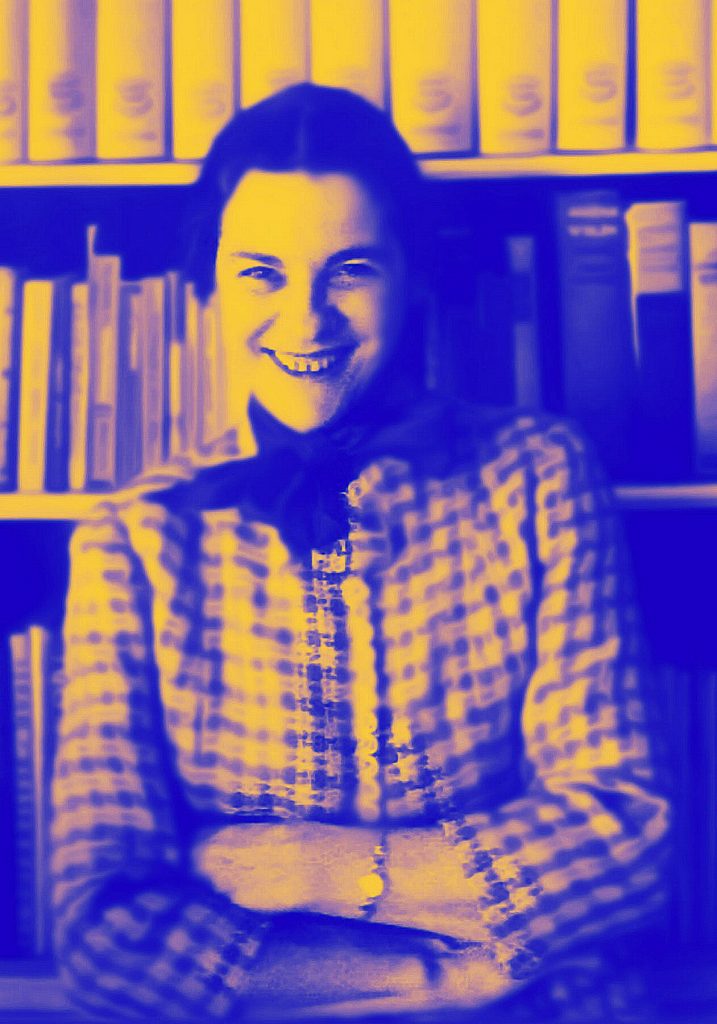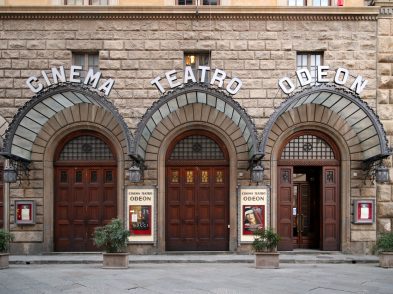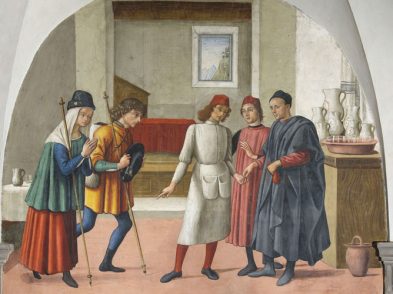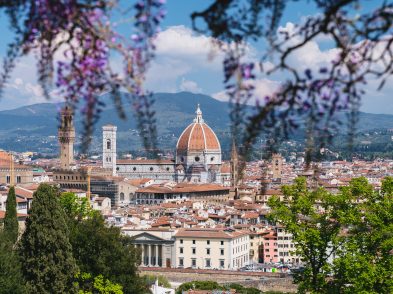In 1959, Mary McCarthy’s The Stones of Florence on the art and history of Florence and the attributes of its citizens first appeared as an essay in The New Yorker and then as a book, whose coffee table version was graced with beautiful photographs, many of which were by Evelyn Hofer. It closely followed the success of her previous volume, Venice Observed (1956). An American author, memoirist, literary critic, and political and social commentator, McCarthy’s often controversial body of work, which was published in newspaper and magazine articles, short stories, novels and non-fiction books, touched on issues like sexual freedom, radicalism, opposition to the Vietnam War, analysis of social upheaval, denouncement of the Watergate scandal and warnings about terrorism. She had no fear of expressing her opinions or stating theories, sometimes using biting wit to make her point or attack adversaries. She was also not averse to thinly veiling friends and acquaintances in her characterizations, like the women she portrayed in 1963 in The Group, her most famous bestseller, which later became a film.
Although McCarthy had visited Florence in 1956 and stayed with the Berensons at I Tatti, she was not contemplating writing a book about the city at that time. This happened the following year when, despite Berenson’s criticism of her Venice book, she informed him that she was thinking of writing a book on Florence, Bologna and Mantua, although the other two cities were soon jettisoned. During this stay in Florence, she met members of the local intelligentsia, such as Violet Trefusis, and the aristocracy, such as Cristina Rucellai and Roberto Papi, all of whom she pumped for information. She also spent a considerable amount of time at the German Institute, where she read all the books on Renaissance art by Kenneth Clark, John Pope-Hennessy and Berenson, as well as many hours visiting museums, churches and art galleries. She would walk the crowded city centre streets, which she complained were full of tourists, traffic, noise and motorbikes, something that has not changed in the almost 65 years since she wrote her book, except during the Covid pandemic.

Mary Therese McCarthy was born in Seattle, Washington on June 21, 1912, the only daughter and the oldest of Roy Winfield McCarthy and Martha Therese Preston’s four children. After her parents died in the 1918 flu epidemic, McCarthy and her three brothers were sent to live with their very Catholic great-aunt Margaret and her husband in Minneapolis. Considering the children, particularly Mary, to be spoiled, their guardians treated them harshly. By today’s standards and based on McCarthy’s description in her 1957 memoir, Memories of a Catholic Girlhood, the behaviour would have been considered as abusive. When the situation became unbearable, McCarthy’s wealthy maternal grandparents took her into their home in Seattle. She would later credit her prominent attorney grandfather with shaping her liberal ideas. Her grandmother ensured she was given the best education money could buy, culminating in her attending Vassar College, in Poughkeepsie, New York, where she graduated in 1933.
Before leaving for university, McCarthy took some acting classes, where she met the young actor and playwright, Harold Cooper Johnsrud, whom she married a week after graduating from Vassar. They divorced three years later. An attractive woman with dark hair, classically elegant features and piercing eyes, McCarthy would have many affairs and marry another three times. Her second husband was writer and critic, Edmund Wilson, whom she married in 1938 and with whom she had a son, Reuel Wilson, that same year. Believing she had the talent, Wilson encouraged her to write fiction, which resulted in her first published novel in 1942, titled The Company She Keeps. They divorced in 1946 and she quickly moved on to husband number 3, a New Yorker journalist called Bowden Broadwater. This marriage lasted until 1961, after which McCarthy married James R. West, a career diplomat who worked at the Organization for Economic Cooperation and Development. Until her death of cancer on October 25, 1989, the couple divided their time between their homes in Paris and Castine, Maine.
Once published, The Stones of Florence was not met with universal praise among reviewers and several prominent locals could not abide it because McCarthy had expressed what they considered to be over-the-top views about the city and a number of its most beloved artworks, including the David statues by Michelangelo and Donatello, Pontormo’s Deposition from the Cross and Michelangelo’s Genius of Victory. But this does not mean, despite its age and some of the discord surrounding it, that this book should no longer be read today. Quite the contrary, it still has much to offer.








